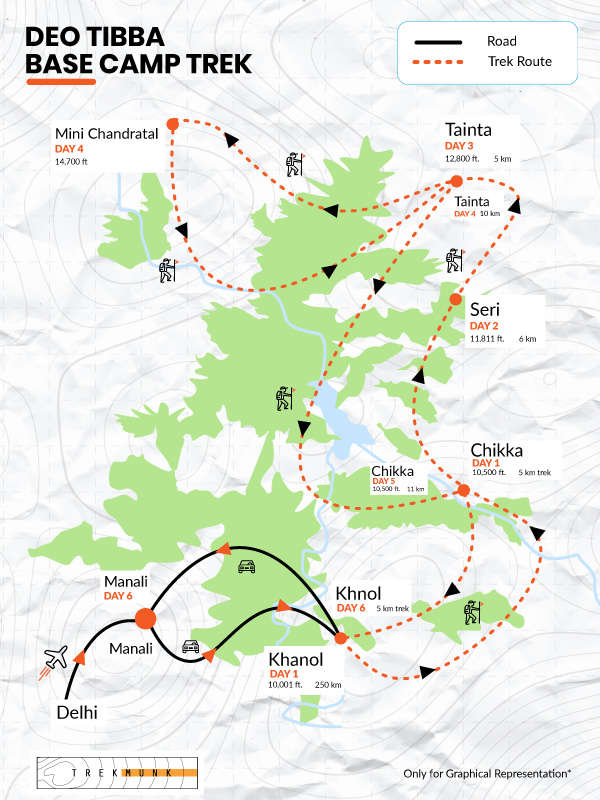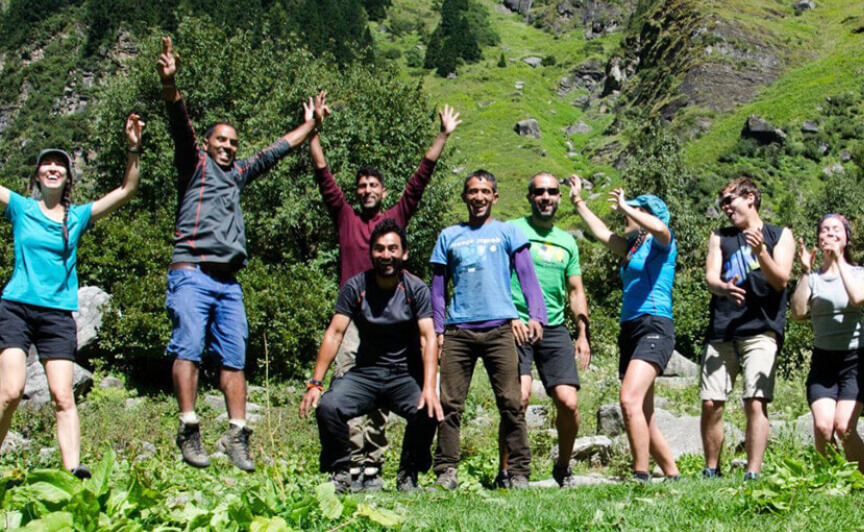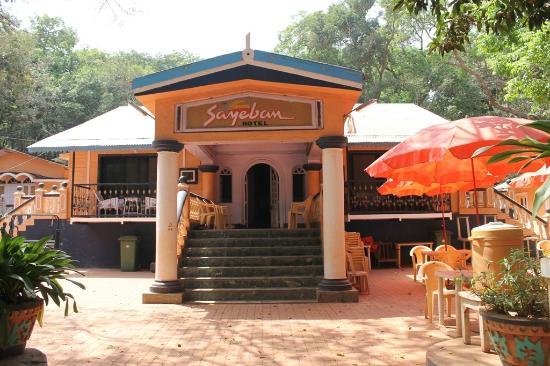The Jagatsukh Deo Tibba Trek is a gem for trekking enthusiasts. Nestled in Himachal Pradesh, India, this trek offers breathtaking views and an unforgettable adventure.
Known for its scenic beauty, the Jagatsukh Deo Tibba Trek attracts nature lovers and thrill-seekers alike. This trek takes you through lush forests, sparkling rivers, and picturesque meadows. The route unveils the majestic Deo Tibba peak, standing tall at 6,001 meters.
Along the way, you’ll witness diverse flora and fauna, making it a paradise for nature enthusiasts. The journey is challenging yet rewarding, suitable for trekkers with moderate experience. Whether you’re an avid trekker or a nature lover, the Jagatsukh Deo Tibba Trek promises an experience filled with natural beauty and tranquility. Ready to embark on this adventure? Let’s dive in!

Credit: www.trekmunk.com
Introduction To Jagatsukh Deo Tibba Trek
When it comes to trekking in the Himalayas, the Jagatsukh Deo Tibba Trek is a hidden gem waiting to be explored. Nestled in the heart of Himachal Pradesh, this trek offers an exhilarating journey through lush forests, sparkling streams, and breathtaking landscapes. Whether you’re an experienced trekker or a passionate beginner, this trek promises an unforgettable adventure.
Location And Accessibility
The Jagatsukh Deo Tibba Trek is located near the picturesque town of Manali in Himachal Pradesh, India. Manali serves as the perfect gateway to this trek, providing easy access for travelers. You can reach Manali by various means:
- By Air: The nearest airport is Bhuntar Airport, around 50 km from Manali. You can take a taxi or a bus from the airport to reach Manali.
- By Road: Manali is well-connected by road from major cities like Delhi and Chandigarh. Comfortable buses and private taxis are readily available.
- By Train: The nearest railway station is Joginder Nagar, approximately 150 km away. From there, you can hire a taxi or take a bus to Manali.
Ideal Time To Visit
Timing your trek can make all the difference in your experience. The best time to embark on the Jagatsukh Deo Tibba Trek is:
- Summer (May to June): The weather is pleasant, and the trails are adorned with blooming flowers. You’ll enjoy clear skies and moderate temperatures.
- Autumn (September to October): This period offers stunning views of the fall foliage and crisp mountain air. The trails are less crowded, providing a tranquil trekking experience.
Have you ever wondered what it’s like to walk through a forest where the only sounds you hear are the rustling leaves and the distant call of a bird? On this trek, you will experience nature in its purest form. The paths are well-marked, and the local guides are incredibly knowledgeable, ensuring you have a safe and enriching journey.
So, why wait? Pack your bags and set out for the Jagatsukh Deo Tibba Trek. You won’t just be ticking off a destination on your bucket list; you’ll be creating memories that last a lifetime. Are you ready for the adventure?
Trek Preparation
Preparing for the Jagatsukh Deo Tibba Trek involves careful planning and readiness. This trek requires good physical fitness, proper gear, and mental preparation. This section will guide you through the essential aspects of preparation to ensure a safe and enjoyable trekking experience.
Physical Fitness Requirements
Trekking to Jagatsukh Deo Tibba demands moderate to high physical fitness. You will walk long distances, sometimes on steep paths. Regular cardio exercises can help. Running, cycling, and swimming are great choices. Strength training is important too. Focus on your legs and core muscles. Try squats, lunges, and planks. Flexibility exercises like yoga can prevent injuries. Start your fitness routine at least two months before the trek.
Essential Gear And Equipment
Proper gear is crucial for a successful trek. Start with sturdy trekking shoes. They should be waterproof and have good grip. Wear moisture-wicking clothes. Layering is key in mountains. Carry a warm jacket, thermal wear, and a raincoat. A good backpack is essential. It should have enough space for your gear and be comfortable to carry. Don’t forget a sleeping bag suitable for cold weather.
Bring a first aid kit. Include bandages, antiseptic, painkillers, and any personal medication. A water bottle or hydration system is vital. High-energy snacks like nuts and energy bars keep you fueled. Trekking poles can provide extra stability. A headlamp with extra batteries is useful for early starts or late arrivals. A hat, sunglasses, and sunscreen protect you from the sun. A map and a compass help you stay on track.
Route Overview
The Jagatsukh Deo Tibba Trek offers a breathtaking journey through Himachal Pradesh. This route provides stunning views, diverse landscapes, and a thrilling adventure for trekkers.
Starting Point: Jagatsukh Village
Jagatsukh Village, near Manali, is the starting point of this trek. This charming village is known for its rustic beauty and traditional Himachali culture. The peaceful environment sets the perfect mood for the adventure ahead. Here, trekkers gather their gear and begin their journey through the mountains.
Key Landmarks Along The Way
The trek passes through several key landmarks. The first notable stop is the Chikka campsite. This area is surrounded by lush greenery and offers a picturesque view of the valley. The next highlight is the Seri Meadow. This vast, open space is filled with vibrant flowers in the summer.
After Seri Meadow, trekkers reach Tenta. This place offers panoramic views of the surrounding peaks. The final landmark is the Deo Tibba Base Camp. Here, trekkers can see the magnificent Deo Tibba peak up close. Each landmark provides unique experiences and stunning views, making the journey unforgettable.
Scenic Beauty And Wildlife
Jagatsukh Deo Tibba Trek offers breathtaking scenic beauty with lush green meadows and snow-capped peaks. Experience diverse wildlife, including rare Himalayan birds and animals, in their natural habitat.
The Jagatsukh Deo Tibba Trek offers a breathtaking experience. The scenic beauty and wildlife here captivate every nature lover. This trek is a paradise for those who appreciate nature’s wonders.Flora And Fauna
The trek is rich in diverse flora. You’ll find dense forests of oak, pine, and deodar. The colorful wildflowers add to the beauty. Rhododendron blooms create a vibrant landscape. Wildlife is abundant in this region. You might spot Himalayan Monal and other birds. There are chances to see animals like the Himalayan Thar. Keep an eye out for rare snow leopards.Photography Opportunities
Photographers will find endless inspiration. The lush green valleys are picture-perfect. Snow-clad peaks provide a stunning backdrop. Capture the serene beauty of glacial lakes. Wildlife photography here is rewarding. Birds and animals in their natural habitat make great subjects. Early morning light offers the best shots. Every turn reveals a new opportunity. In Jagatsukh Deo Tibba Trek, every step brings new sights. The scenic beauty and wildlife make it unforgettable.Camping Experience
## Camping Experience When it comes to the Jagatsukh Deo Tibba Trek, the camping experience stands out as one of the most memorable aspects of the journey. Nestled amidst the breathtaking landscapes of the Himalayas, your nights under the starry skies are bound to be magical. The crisp mountain air, the tranquility, and the camaraderie among fellow trekkers make it an unforgettable experience. But what truly enhances this adventure are the campsites along the way, each offering a unique slice of nature. ### Popular CampsitesOne of the most popular campsites on the Jagatsukh Deo Tibba Trek is the Chikka campsite. Set against the backdrop of lush greenery and serene streams, it’s a perfect spot for unwinding after a day’s trek.
Next up, Seri is another favorite among trekkers. Surrounded by alpine meadows and stunning views of the snow-capped peaks, it’s a photographer’s paradise. Don’t forget your camera!
Finally, the Deo Tibba Base Camp itself is the crown jewel. Located at an altitude where you can almost touch the clouds, it offers panoramic views of the entire valley. Waking up here feels like a dream.
To make your camping experience even more enjoyable, consider these practical tips:
- Pack Light, but Smart: Carry essentials like a warm sleeping bag, a reliable tent, and enough layers to keep you warm. Trust me, you’ll thank yourself later.
- Stay Dry: Always pack an extra set of clothes in a waterproof bag. Unexpected rain can dampen your spirits if you’re not prepared.
- Hydration is Key: Drink plenty of water, even if you’re not feeling thirsty. The high altitude can dehydrate you quickly.
- Leave No Trace: Respect nature. Carry back all your trash and avoid disturbing the local flora and fauna.
- Safety First: Always inform someone about your camping location and expected return time. Better safe than sorry, right?
Camping on the Jagatsukh Deo Tibba Trek can be a transformative experience. Imagine sitting by a campfire, sharing stories, and gazing at the Milky Way. Could there be a better way to connect with nature and yourself?
Whether you’re an experienced trekker or a newbie, these tips and insights will help you make the most of your camping adventure. So, are you ready to pack your bags and set off on a journey that promises both challenge and beauty?

Credit: www.tourmyindia.com
Challenges And Safety
Jagatsukh Deo Tibba Trek offers stunning views but presents challenges like steep ascents and unpredictable weather. Safety measures, including proper gear and acclimatization, are essential for a successful trek.
Trekking the Jagatsukh Deo Tibba trail offers an unforgettable adventure. However, like all great journeys, it comes with its share of challenges. Understanding these hurdles and knowing how to stay safe can make your trek both enjoyable and secure. Let’s dive into the key aspects of weather conditions and safety measures.Weather Conditions
The weather in the Himalayas can be unpredictable. One moment you’re basking in sunlight; the next, you’re caught in a chilly downpour. During my last trek, we started with clear skies, but by midday, thick clouds rolled in, bringing a sudden temperature drop. – Temperature Swings: Be prepared for drastic changes. Pack layers to adjust to varying temperatures. – Rain and Snow: Even in summer, snow at higher altitudes is possible. Carry waterproof gear. – Wind: High winds can make the hike harder. A sturdy windbreaker is essential. You might wonder, how can you prepare for such variability? Always check weather forecasts before setting out and be ready to adapt your plans if conditions worsen.Safety Measures
Safety should be your top priority on the Jagatsukh Deo Tibba trek. Here are some practical measures to ensure you stay safe: – Stay Hydrated: At higher altitudes, your body loses water faster. Drink water regularly, even if you don’t feel thirsty. – Altitude Sickness: Ascend slowly to allow your body to acclimatize. If you feel dizzy or nauseous, descend immediately. – First Aid Kit: Carry a basic first aid kit with medications for common ailments like headaches and stomach issues. – Travel in Groups: Solo trekking can be risky. If possible, hike with at least one companion. It’s not just safer; it’s more fun! – Navigation Tools: A map and compass are crucial. While GPS is handy, don’t solely rely on it as batteries can die. Have you thought about what you’d do in an emergency? Plan an emergency exit route and know the nearest shelter points. It’s better to be over-prepared than caught off guard. By staying informed and prepared, you can tackle the Jagatsukh Deo Tibba trek’s challenges with confidence. Are you ready to embrace the adventure?Local Culture And Traditions
Experience the Jagatsukh Deo Tibba Trek and discover local culture and traditions. Interact with friendly villagers and witness unique rituals. Enjoy traditional cuisine and local folklore.
The Jagatsukh Deo Tibba Trek offers more than stunning landscapes. It provides a window into the local culture and traditions of the region. As you journey through the villages, you can experience the rich heritage of the Himalayan people. Their unique customs and warm hospitality create lasting memories.Interaction With Locals
During the trek, you will meet many locals. They are always eager to share their stories. Villagers often welcome trekkers with open arms. You can learn about their daily lives and traditions. Farmers and shepherds can often be seen working in the fields. You can also see traditional houses made of stone and wood. These homes are built to withstand harsh weather. Many locals will invite you for a cup of tea. This is a common gesture of hospitality. Their kindness and simplicity are truly heartwarming.Cultural Insights
The region has a rich cultural tapestry. Festivals play a big role in local life. Many festivals celebrate the seasons and harvests. Traditional music and dance are key elements of these celebrations. You may witness a local festival during your trek. Local crafts are also unique. Handwoven shawls and garments are popular souvenirs. These items showcase the skilled craftsmanship of the villagers. The designs often reflect the natural beauty of the Himalayas. Religion is another important aspect of life here. Many villagers follow Hinduism and Buddhism. You will see small temples and shrines along the way. Each has its own story and significance. Respecting these sites is important for trekkers. By immersing yourself in the local culture, you enrich your trekking experience. The people, their stories, and traditions add depth to your journey.Post-trek Reflections
The Jagatsukh Deo Tibba Trek is an unforgettable adventure. As you unwind and reflect, many thoughts and memories come to mind. Let’s dive into some key reflections from this thrilling journey.
Memorable Experiences
The sheer beauty of the landscapes leaves trekkers in awe. Towering peaks, serene rivers, and lush valleys create a stunning backdrop. Each moment feels magical.
The local culture also adds to the experience. Friendly villagers share their stories and traditions. These interactions enrich your journey and offer a deeper connection to the region.
Reaching the summit is another highlight. The sense of achievement is immense. The panoramic view from the top is a reward worth every step. It’s an image that stays with you forever.
Advice For Future Trekkers
Preparation is key. Ensure you have the right gear and clothing. The weather can change quickly.
Stay hydrated and carry enough water. Altitude can affect your body, so take it slow. Listen to your body and rest when needed.
Respect the environment. Carry all your trash and leave no trace. Preserve the beauty for future trekkers.
Engage with locals. Their insights can enhance your trek. They know the terrain and can offer valuable tips.
Finally, enjoy every moment. The journey is as important as the destination. Savor the beauty and peace that nature offers.

Credit: lionheartexpeditions.com
Frequently Asked Questions
How Many Kilometers Is The Deo Tibba Trek?
The Deo Tibba trek covers approximately 37 kilometers. This scenic route offers stunning views of the Himalayas and lush landscapes.
Is Nag Tibba Trek Difficult?
Nag Tibba Trek is moderately difficult. It suits beginners with decent fitness levels. The trail includes steep sections and scenic views.
How Far Is Deo Tibba From Manali?
Deo Tibba is approximately 20 kilometers from Manali. The trek offers stunning views and takes about 3-4 days.
How Long Is The Trek To Nag Tibba?
The trek to Nag Tibba typically takes around 2 days. The distance covered is approximately 10 kilometers each way.
Conclusion
The Jagatsukh Deo Tibba Trek promises adventure and stunning views. This trek is ideal for nature lovers and thrill-seekers. Every step offers breathtaking scenery. Prepare for an unforgettable experience in the mountains. Trekking here creates lifelong memories and stories to share.
Plan your trip and embrace the journey. You’ll leave with a sense of accomplishment. Nature’s beauty awaits on the Jagatsukh Deo Tibba Trek. Make sure to explore this incredible trail.
{ “@context”: “https://schema.org”, “@type”: “FAQPage”, “mainEntity”: [ { “@type”: “Question”, “name”: “How many kilometers is the Deo Tibba trek?”, “acceptedAnswer”: { “@type”: “Answer”, “text”: “The Deo Tibba trek covers approximately 37 kilometers. This scenic route offers stunning views of the Himalayas and lush landscapes.” } } , { “@type”: “Question”, “name”: “Is Nag Tibba Trek difficult?”, “acceptedAnswer”: { “@type”: “Answer”, “text”: “Nag Tibba Trek is moderately difficult. It suits beginners with decent fitness levels. The trail includes steep sections and scenic views.” } } , { “@type”: “Question”, “name”: “How far is deo tibba from Manali?”, “acceptedAnswer”: { “@type”: “Answer”, “text”: “Deo Tibba is approximately 20 kilometers from Manali. The trek offers stunning views and takes about 3-4 days.” } } , { “@type”: “Question”, “name”: “How long is the trek to Nag Tibba?”, “acceptedAnswer”: { “@type”: “Answer”, “text”: “The trek to Nag Tibba typically takes around 2 days. The distance covered is approximately 10 kilometers each way.” } } ] }





